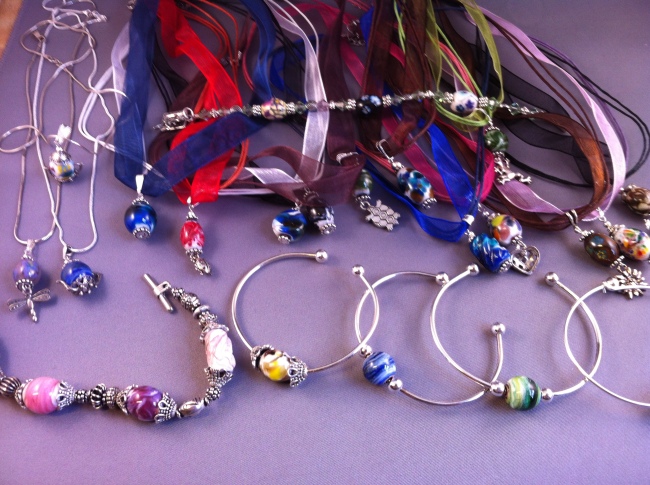Spring has sprung again and that means time for my yearly collection of blossoms and leaves. Still waiting on my dogwoods to bloom, but have started on some leaves for earrings. When working with metal clay paste, you have to be sure your organic materials are strong and the ideal size for jewelry. My collection every year begins with this one simple rule–collect multiple branches and blossoms and then find the right ones to work with back in the studio. Of course, I work in volume during Spring for the whole collection of my organic pieces for my shows, so I have to make sure I have plenty of paste.
While you can always go the easier route and impress your organics into the clay itself, I find that using the actual organic in the process brings a nicer depth to the piece. It does require patience and diligence to paste the 20+ layers of metal clay paste but the end results are worth it.
Because of the cost of the silver clay, I have learned to reclaim all my shavings, bits of clay that have hardened and pieces that just didn’t work for me before I fired them. I keep an ongoing collection of my dust and powder from sanding pieces before firing. That’s some valuable silver in all that dust. Keep it in a dry, air tight container so that you don’t collect dust and junk flying around our air. When you have enough (I usually use about 6 oz or more of collected material) then you are ready to begin making the paste. I always buy the ready made paste for each season and then I keep all the jars to use for my reclaimed paste. Here’s the process:
Gather together the following tools:
Mortar and Pestle (for grinding and mixing), pallet blade, water, PasteMaker by Sherri Haub, Glycerin, by Cool Tools, empty jars for storing paste, mixing bowl with airtight lid (I use the Glad ware bowls) and your reclaimed dust!

Your material will look like this when you start–lumps and broken clay pieces.

Keep grinding to reduce your material to powder or small particles. Use a razor blade to help break down the small pieces into even finer pieces.

Once you’ve achieved a fine powder, put in mixing bowl and add several drops of the PasteMaker as well as the Glycerin. You can certainly use water (distilled) as well, but I find the glycerin makes the paste very smooth.

Keep adding the glycerin, the PasteMaker and/or water to keep developing the powder into clay. Use lots of motion with your mixing and keep cutting into the paste with your blade.


The mixture will eventually look like this–really work this with your blade–then you’ll see the paste getting better and better! At this point, develop the paste to the consistency you want to work with–thinner or thicker–all based on the organic you are pasting to make this decision.


Once you’ve worked the paste to your chosen consistency–simply place the paste into your empty containers. I don’t clean them at all–I just scrape out the leftovers to my powder mix and reclaim it all!


As you can see from the pictures below, I had several types of organic to work with. And plenty of paste to go around. Have fun and feel free to experiment as you now have more material to work with that you already purchased!
























































